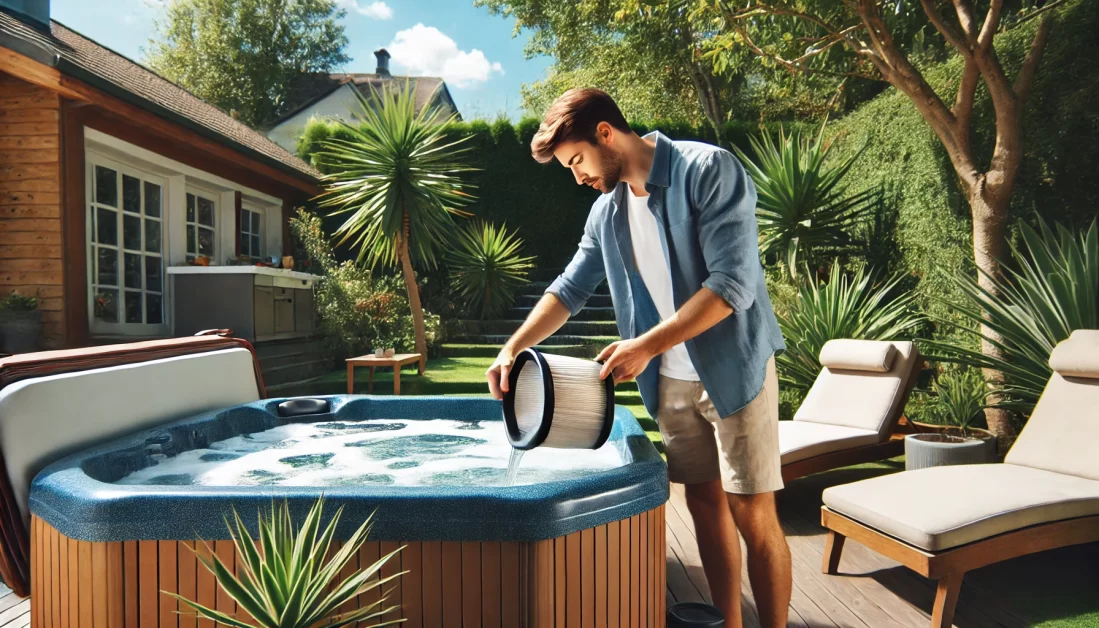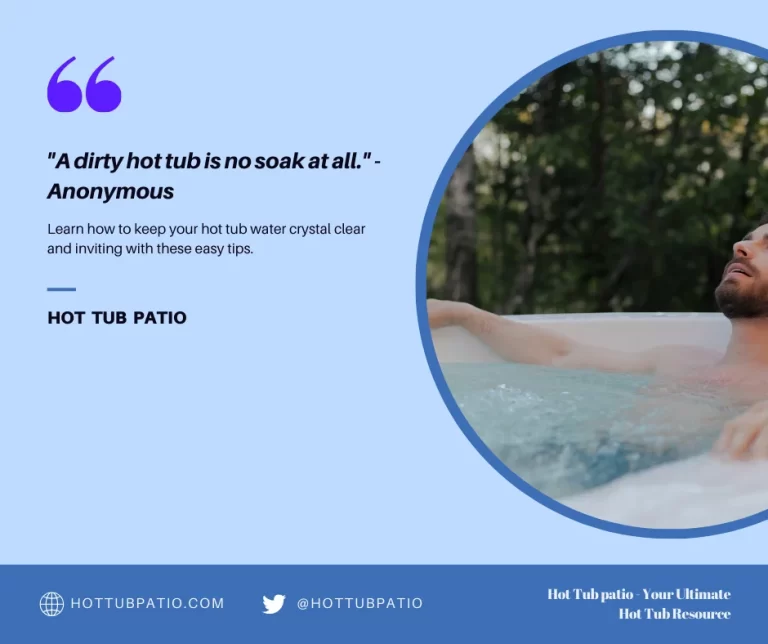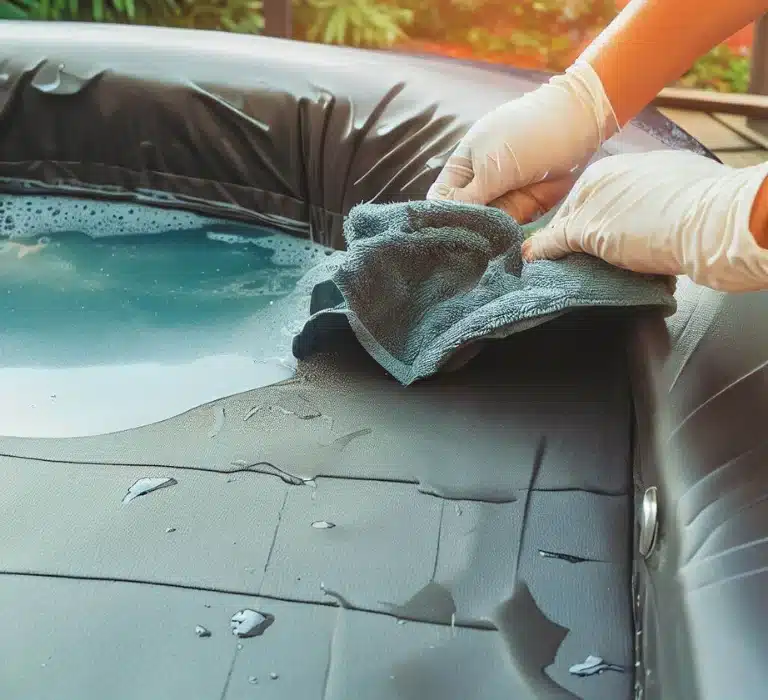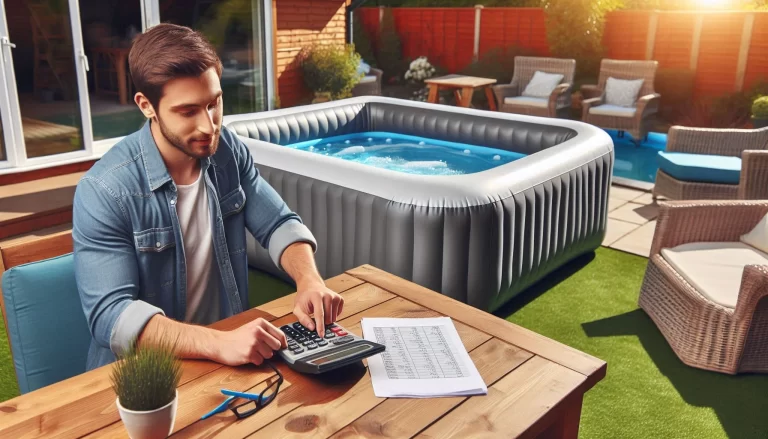How often should I change the water in my hot tub?
Learn how often to change the water in your hot tub with our easy guide. Understand the factors that affect water quality, follow a step-by-step water-changing process, and get tips for maintaining clean and safe water. Perfect for hot tub owners seeking straightforward advice.
Quick Overview
Hey there! If you’re wondering how often you should change the water in your hot tub, you’ve come to the right place. I’m here to give you some straightforward advice. Generally, changing the water every 3-4 months is a good idea, but it can vary based on how often you use it and how many people are hopping in.
In this guide, we’ll chat about why keeping the water fresh is important, what factors can influence how often you should change it, and some easy steps to do it right. Let’s dive in and ensure your hot tub stays clean and enjoyable!
Introduction
Welcome! Owning a hot tub is a great way to relax and unwind, but keeping it clean is crucial for your health and enjoyment. You might ask yourself, “How often should I change the water in my hot tub?” Well, you’re not alone.
Many hot tub owners wonder about this. Regular water changes are essential to keep your tub free of bacteria and chemicals.
General Recommendation
When it comes to changing the water in your hot tub, a good rule of thumb is to do it every 3-4 months. This timeframe is generally recommended because, over time, the water can accumulate dirt, oils, and chemicals that can’t be filtered out.
Regularly changing the water helps maintain its clarity and safety, ensuring you enjoy a clean and inviting hot tub.
However, the exact frequency might vary based on how often you use your hot tub and how many people use it. If your hot tub sees frequent use, you might need to change the water a bit more often.

Factors Affecting Water Change Frequency
Factors can influence how often you should change the water in your hot tub:
Usage Level
The more frequently you use your hot tub, the quicker the water will get dirty. If you use it daily or have frequent hot tub parties, you’ll need to change the water more often than if you use it occasionally.
Number of Users
A hot tub used by multiple people will accumulate oils, sweat, and other contaminants faster than one used by just one or two people. More users mean more frequent water changes.
Water Quality Testing
Regularly testing the water quality can help you determine when to change. If you notice imbalances in pH, high levels of sanitizer demand, or persistent cloudiness despite treatment, it’s a sign the water needs to be replaced.
Environmental Factors
The location of your hot tub can also play a role. Outdoor hot tubs might collect more debris, such as leaves and dirt, which can degrade water quality faster. Additionally, hot tubs in warmer climates may require more frequent changes due to faster bacterial growth in warmer water.
Chemical Balance and Maintenance
Proper chemical maintenance can extend the life of your hot tub water. Using the right amount of sanitizers, shock treatments, and other chemicals helps clean the water. However, even with diligent maintenance, there comes a point when the water chemistry becomes difficult to balance, signaling the need for a fresh start.
Health and Safety Considerations
Keeping your hot tub water fresh isn’t just about maintaining its appearance—it’s also crucial for your health and safety. Here’s why regular water changes are so important:
Bacteria and Pathogens
Stagnant or poorly maintained water can become a breeding ground for harmful bacteria and pathogens, such as Legionella, which causes Legionnaires’ disease. Regularly changing the water helps prevent the buildup of these microorganisms, keeping your hot tub a safe place to relax.
Chemical Balance
Over time, the chemicals used to keep your hot tub clean, like chlorine or bromine, can become less effective. This can lead to imbalanced pH levels, which can cause skin irritation, eye discomfort, and respiratory issues. Freshwater ensures that your chemicals work effectively, maintaining a safe balance.
Water Clarity
Cloudy or discolored water isn’t just unappealing—it can also be a sign of poor water quality. Clear water is essential for spotting any potential issues with the hot tub’s surface or components. Regular water changes keep the water clear so you can easily identify and address any problems.
Biofilm Prevention
Biofilm is a slimy layer of bacteria that can form on the surfaces of your hot tub if the water isn’t changed regularly. It can be difficult to remove and harbor harmful bacteria. Changing the water and regularly cleaning the tub’s surfaces help prevent biofilm formation.
Check out Why Is My Hot Tub Cloudy Even When the Chemicals Are Balanced?
User Health
Clean water reduces the risk of skin infections, rashes, and other health issues. This is particularly important for individuals with sensitive skin or allergies. Ensuring the water is changed regularly means enjoying your hot tub without worrying about adverse health effects.
Step-by-Step Guide to Changing Hot Tub Water
Changing the water in your hot tub might seem like a big task, but with a clear plan, it can be straightforward. Here’s a step-by-step guide to help you do it right:
Preparation
- Gather Supplies: You’ll need a hose, a submersible pump (if your hot tub doesn’t have a built-in drain), a soft cloth or sponge, a hot tub cleaner, and water testing kits.
- Check the Manual: Refer to your hot tub’s manual for specific instructions on draining and refilling.
Draining the Water
- Turn Off the Power: Ensure the hot tub is turned off and unplugged to avoid electrical issues.
- Attach the Hose: Connect a garden hose to the drain valve. If your hot tub doesn’t have a drain, use a submersible pump.
- Open the Drain Valve: Let the water flow out through the hose. This can take some time, so be patient.
- Remove the Filters: Take out the filters and soak them in a cleaning solution while the tub is draining.
Cleaning the Tub
- Wipe Down Surfaces: Wipe down the interior surfaces with a soft cloth or sponge and hot tub cleaner. Pay special attention to corners and crevices where dirt can accumulate.
- Rinse Thoroughly: After cleaning, rinse the surfaces well to ensure no cleaner residue remains.
Refilling the Hot Tub
- Close the Drain Valve: Ensure the drain valve is closed securely before refilling.
- Place the Hose: Put the garden hose in the hot tub and fill it with fresh water. It’s best to use a pre-filter on the hose to reduce impurities in the water.
- Monitor the Water Level: Fill the tub until the water reaches the appropriate level, usually just above the highest jet.
Check out Speed Up Refilling Hot Tub with 6 Simple DIY Hack
Chemical Balancing
- Power Up: Turn the hot tub back on and let the water circulate for a few minutes.
- Test the Water: Use a water testing kit to check pH, alkalinity, and sanitizer levels.
- Adjust Chemicals: Add the necessary chemicals to balance the water. Follow the instructions on the chemical packaging and retest the water after a few hours.
Final Steps
- Reinstall the Filters: After they’ve been cleaned and dried, put the filters back in place.
- Run a Cycle: Let the hot tub run for a full cycle to ensure everything works properly and the water is evenly mixed.
Tips for Maintaining Water Quality Between Changes
Keeping your hot tub water in top shape between full changes is essential for an enjoyable and safe experience. Here are some practical tips to help you maintain water quality:
Regular Testing
- Test Frequently: Use water testing strips or a digital tester at least once weekly to check pH, alkalinity, and sanitizer levels.
- Adjust as Needed: Based on your test results, adjust the chemical levels to maintain balance. This helps prevent issues like cloudy water and skin irritation.
Check out Best Hot Tub Chemicals Kit: Get the Perfect Chemistry
Chemical Maintenance
- Sanitizers: Use chlorine or bromine regularly to keep the water free from harmful bacteria. Follow the recommended dosage on the product packaging.
- Shock Treatments: Perform a shock treatment weekly to eliminate organic contaminants. This helps keep the water clear and reduces odors.
- pH and Alkalinity Balancers: Keep pH levels between 7.2 and 7.8 and total alkalinity between 80-120 ppm. Use pH increasers or decreases as needed.

Filter Cleaning
- Rinse Weekly: Remove and rinse the filters with a garden hose weekly to remove debris and particles.
- Deep Clean Monthly: Soak the filters in a filter cleaning solution monthly to remove oils and deep-seated dirt.
- Replace as Needed: Replace the filters every 12-24 months, depending on usage and manufacturer recommendations.
Check out Printable Cleaning Schedules: Hot Tub Resources.
Cover Usage
- Use the Cover: Always cover your hot tub when not in use. This prevents debris from falling in and reduces evaporation and heat loss.
- Clean the Cover: Wipe down the cover regularly to prevent mold and mildew buildup. Use a mild cleaner and rinse thoroughly.
Maintain Water Level
- Check Regularly: Monitor the water level, especially after heavy use or significant evaporation.
- Top Off as Needed: Add water to maintain the correct level, usually just above the highest jet. This ensures the pump and heater work efficiently.
Bather Hygiene
- Shower Before Entering: Encourage users to shower before using the hot tub to reduce the amount of oils, lotions, and sweat that enter the water.
- Limit Food and Drinks: Avoid bringing food and drinks into the hot tub to prevent spills and contamination.
Expert Advice and Resources
Learning from the experts can make a big difference in maintaining your hot tub. Here are some valuable pieces of advice and resources to help you keep your hot tub in prime condition:
Expert Tips
- Consistent Schedule: Stick to a consistent maintenance schedule. Setting reminders for regular tasks like testing the water, adding chemicals, and cleaning filters can help you stay on top of your hot tub care.
- Keep a Log: Maintain a log of your water tests and chemical additions. This can help you track changes over time and identify any recurring issues.
- Inspect Regularly: Regularly inspect your hot tub for signs of wear and tear, such as leaks, cracks, or malfunctioning jets. Addressing small issues promptly can prevent bigger problems down the line.
- Winterizing: If you live in a cold climate, properly winterize your hot tub to prevent freezing and damage. This involves draining the water and protecting the equipment from frigid temperatures.
Recommended Products
- Water Testing Kits: Use a reliable water testing kit for accurate readings. Digital testers can provide more precise results compared to test strips.
- Chemical Kits: Use high-quality chemicals specifically designed for hot tubs. Brands like Leisure Time, Spa Essentials, and Clorox offer comprehensive kits with everything you need.
- Filter Cleaners: Products like filter cleaning sprays and soaking solutions help keep your filters in top condition. Regular use extends filter life and improves water quality.
Helpful Resources
- Manufacturer Manuals: Refer to your hot tub’s user manual for specific maintenance instructions and troubleshooting tips.
- Online Forums: Join online communities and forums where hot tub owners share their experiences and advice. Websites like Trouble Free Pool and HotTubWorks are great places to start.
- Instructional Videos: YouTube has numerous instructional videos that demonstrate various maintenance tasks. Channels like Swim University offer step-by-step guides and tips.
- Professional Services: Don’t hesitate to consult with a professional for complex issues or routine servicing. Regular check-ups by a certified technician can ensure your hot tub operates smoothly.
Quotes from Experts
- Hot Tub Industry Specialist John Smith: “Regular maintenance is the key to extending the life of your hot tub and ensuring a safe soaking environment. Simple, consistent care can prevent most common issues.”
- Water Quality Expert: “Balancing your water chemistry is crucial. Incorrect pH levels can cause skin irritation and damage your hot tub components. Test often and adjust as necessary.” – Jane Doe, Water Quality Expert.
Frequently Asked Questions (FAQs)
How Often Should I Change My Hot Tub Water?
Generally, you should change the water every 3-4 months. However, the frequency can vary based on how often you use the hot tub and the number of users. Regular water testing can also help determine if a change is needed sooner.
What Should I Do If My Hot Tub Water Is Cloudy?
Cloudy water can be caused by imbalanced chemicals, dirty filters, or high battery loads. Start by testing and adjusting your chemical levels, cleaning or replacing the filters, and giving the water a shock treatment. If the problem persists, it might be time to change the water.
How Do I Balance the Chemicals in My Hot Tub?
Regularly test the water for pH, alkalinity, and sanitizer levels. Adjust the pH to stay between 7.2 and 7.8 and alkalinity between 80-120 ppm. Use chlorine or bromine to maintain the proper sanitizer levels. Follow the instructions for your chemical products and retest them after making adjustments.
Can I Use Household Cleaning Products to Clean My Hot Tub?
It is best to use cleaning products specifically designed for hot tubs. Household cleaners can contain ingredients that may damage your hot tub or disrupt the water chemistry, while hot tub-specific cleaners are formulated to be safe for the surfaces and water.
How Often Should I Clean the Filters?
Rinse your filters with a garden hose weekly to remove debris. Once a month, soak the filters in a cleaning solution to remove oils and deep-seated dirt. Replace the filters every 12-24 months, depending on usage and manufacturer recommendations.
What Is Shock Treatment and How Often Should I Do It?
Shock treatment involves adding a large dose of sanitizer to the water to eliminate organic contaminants and clear the water. It’s typically done weekly or after heavy use. Follow the instructions on your shock product for the correct dosage.
How Do I Winterize My Hot Tub?
If you live in a cold climate and won’t use your hot tub during the winter, you should winterize it to prevent damage. This involves draining the water, blowing out the pipes, and adding antifreeze. It’s a good idea to consult your hot tub’s manual and consider hiring a professional to ensure it’s done correctly.
Is It Safe to Use My Hot Tub Every Day?
Yes, using your hot tub daily is safe as long as you maintain the water quality and balance the chemical levels. Regular maintenance and proper hygiene practices will ensure your hot tub remains a healthy and enjoyable place to relax.
Closing Arguments:
Regularly changing your hot tub water and maintaining proper chemical balance is key to a clean, safe, and enjoyable experience. By following these tips and guidelines, you can keep your hot tub in excellent condition year-round.
Ready to dive into a cleaner hot tub routine? Visit Hot Tub Patio for more expert advice and high-quality products. Do you have any tips or questions about hot tub maintenance? Share them with us in the comments below!













